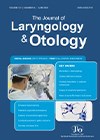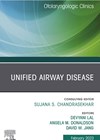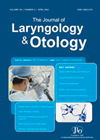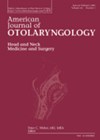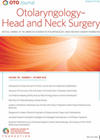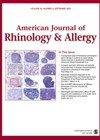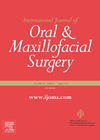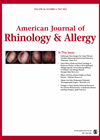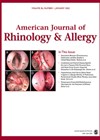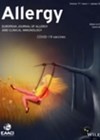
Journal Reviews
A systematic review of adjunctive probiotic therapy in the management of chronic rhinosinusitis
It is generally understood that administering substances containing live microbiologically active micro-organisms (probiotics) enhances the treatment of chronic rhinosinusitis. Probiotics manipulate and rebalance the alterations occurring in the local microbiome in chronic rhinosinusitis patients. This results in propagation of healthy...
How best can we manage Samter’s Triad/AERD?
The classic ‘Samter’s Triad’ of asthma, chronic rhinosinusitis with nasal polyposis (CRSwNP), and aspirin sensitivity is now referred to as aspirin-exacerbated respiratory disease (AERD) or non-steroidal anti-inflammatory-exacerbated respiratory disease. We often come across in our rhinology setting, patients with recalcitrant...
Can ‘cone beam CT scan’ (CBCT) facilitate one-stop rhinology clinic?
Chronic rhinusinusitis can be diagnosed on the basis of its classical symptoms such as nasal obstruction, facial pains, postnasal drip and hyposmia, supported by endoscopic findings such as oedema of middle meatus, mucopus and polyps. However, CT scan findings are...
Diagnostic features of acute invasive fungal sinusitis
Acute invasive fungal sinusitis (AIFS) is a rare but frequently lethal condition, commonly associated with a high morbidity among those that survive. It has gained recent media attention on account of its increased incidence following infection with (and treatment for)...
REVISIONS acronym for preoperative imaging review in revision endoscopic sinus surgery
The authors have developed an acronym to aid evaluation of preoperative sinus CT imaging in revision endoscopic sinus surgery (RESS). To determine which pertinent aspects of anatomy to include, a systemic review of studies that investigated anatomic contributions to persistent...
Does endoscopic sinus surgery for chronic rhinosinusitis improve COPD?
Chronic rhinosinusitis (CRS) can be associated with asthma, with a reported frequency of asthma in patients with CRS of up to 44%. COPD is another lung condition that can be associated with CRS. This longitudinal study reviewed the nasal and...
Does pollution worsen inflammatory nasal problems?
This ambitious study, conducted over a period of four years, assessed 27,863 patients and compared levels of allergic rhinitis (AR) or chronic rhinosinusitis (CRS) with the levels of air pollution recorded, as assessed by levels of particulate matter (PM10). They...
Effects on the nasal cavity and maxillary sinus after a Le Fort I osteotomy
This paper from Turkey divided 28 patients into three groups: those having a maxillary advancement osteotomy, those with a maxillary advancement and impaction, and those that underwent advancement with a yaw rotation. They found that pure advancement movement of the...
Does sleep quality improve when we adequately treat CRS?
In addition to the well-known symptoms associated with chronic rhinosinusitis (CRS), patients often suffer with poor sleep quality which is also detrimental to health and wellbeing. This meta-analysis looked at 35 papers reporting outcomes for CRS patients post surgery on...
Should we be utilising the pre-lacrimal approach for maxillary sinus inverted papilloma?
For some time now, gold standard management of the maxillary sinus inverted papilloma has been endoscopic medial maxillectomy (EMM). Recently the endoscopic prelacrimal recess approach (EPLRA) has been reported to provide good access whilst preserving the nasolacrimal duct and inferior...
Age is not an issue in sinus surgery
We have an increasingly aged population, and hence older and older patients are presenting with sinonasal issues and the potential need for endoscopic sinus surgery (ESS). The authors sought to identify if older patients (age >70) have more complications post...
Eosinophilic or not eosinophilic: dupilumab seems to work
Chronic rhinosinusitis with nasal polyps (CRSwNP) is a type 2 inflammation with interleukin (IL)-4, IL-13, and IL-5. Tissue eosinophilia in nasal polyps dramatically increased over a 10-20-year period. Classification of the severity of eosinophil status is expected to lead to...

